Which Famous Artist Has Your Myers-Briggs® Personality Type?
Is there any particular artist you feel a special connection to? Do you ever see a painting or drawing and feel irresistibly drawn to it? Artwork can express something deep inside of us that words cannot. A piece of artwork can capture a moment in time in a way that even a photograph can’t. Anyone can be an artist, you don’t have to have a particular personality type, but different types tend to prefer different types of artwork. Intuitives are drawn to symbolic images that are drawn from the imagination. Sensors tend to appreciate realism and historical artwork.
It took quite a while to compile this list of artists, but eventually, I found a creator from each personality type. I hope looking at this list will inspire you to explore your creative side!
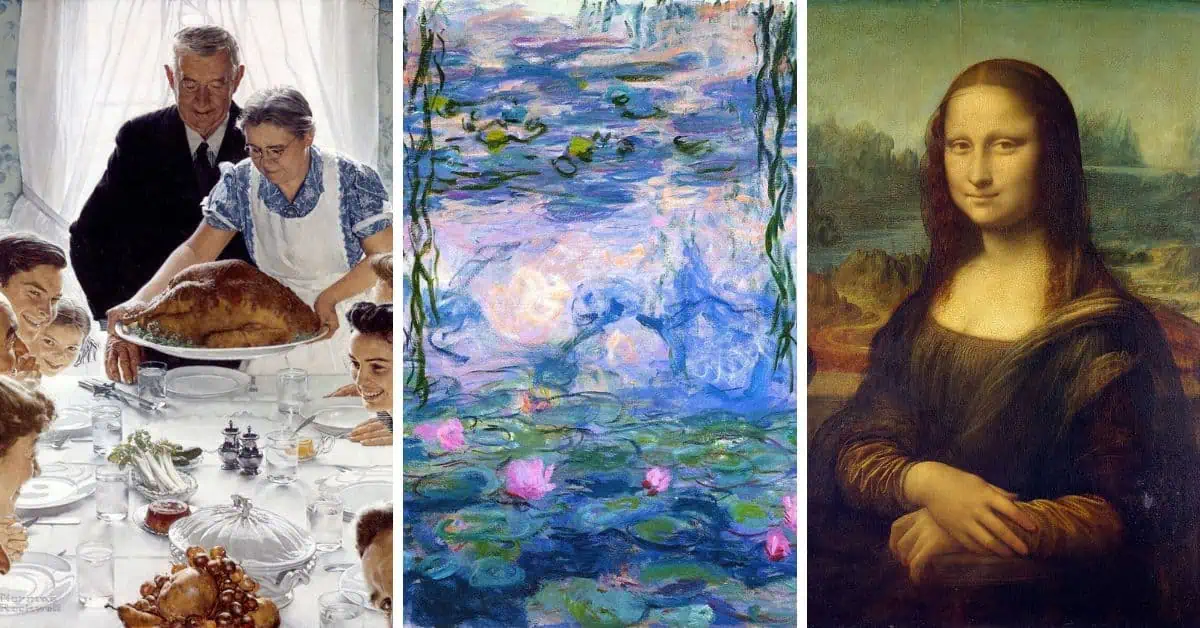
Not sure what your personality type is? Take our new personality questionnaire here. Or you can take the official MBTI® here.
If you want to learn more about how you can develop your creative gifts based on your type, check out one of my favorite books, Creative You: Using Your Personality Type to Thrive
Table of contents
- ENFP – Salvador Dali
- ENTP – Leonardo da Vinci
- INFP – Vincent Van Gogh
- INTP – J.M.W Turner
- ENFJ – Henri Matisse
- ENTJ – Claude Monet
- INFJ – Odilon Redon
- INTJ – Arnold B ö cklin
- ESFJ – George Hughes
- ESTJ – Emanuel Leutze
- ESFP – Frederic Remington
- ESTP – John James Audubon
- ISFP – Winslow Homer
- ISTP – Georgia O’Keeffe
- ISFJ – Norman Rockwell
- ISTJ – Edward Hopper
Estimated reading time: 24 minutes
ENFP – Salvador Dali
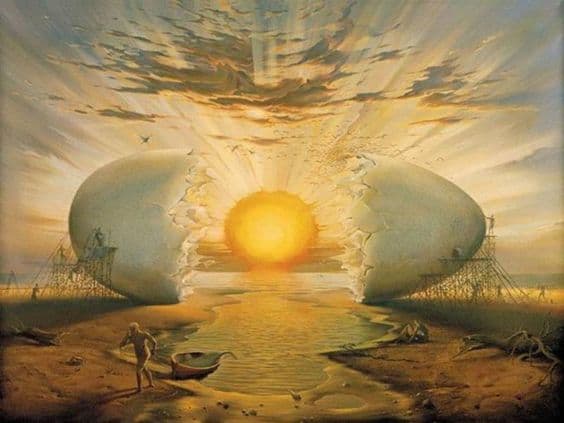
“Surrealism is destructive, but it destroys only what it considers to be shackles limiting our vision.”
– Salvador Dali
Salvador Dalí wasn’t just an artist—he was the walking embodiment of an ENFP fever dream. This man didn’t just create surrealism; he lived it. Ever the showman, he once showed up to a lecture wearing a full deep-sea diving suit (helmet and all), claiming he was about to take the audience on a “deep dive” into the subconscious. There was just one problem—he forgot to make sure he could breathe. He had to be rescued mid-speech when someone frantically unscrewed his helmet with a spanner before he suffocated. Classic ENFP—big vision, minor logistical oversight.
And then there was the time he took a Rolls-Royce Phantom II on a road trip from Spain to Paris—completely packed with cauliflowers. Why cauliflowers? No one knows. Did it make perfect sense to Dalí? Absolutely. If you’ve ever had a hyperfixation that made everyone else question your sanity, congrats—you’re in good company.
Dalí’s artistic style was as chaotic and boundless as his personality. His paintings were dreamscapes on acid, filled with melting clocks, floating eyeballs, and bizarre creatures. He saw not just what was, but what could be, endlessly fascinated by the layers of meaning hidden beneath the surface of reality.
Nothing was off-limits. Nothing was too weird. Dalí was curiosity, imagination, and unapologetic eccentricity wrapped in one mustachioed enigma. If ENFPs had a patron saint, it would be him—flamboyant, fearless, and always chasing the next wild idea, no matter how impractical, nonsensical, or cauliflower-filled it might be.
ENTP – Leonardo da Vinci
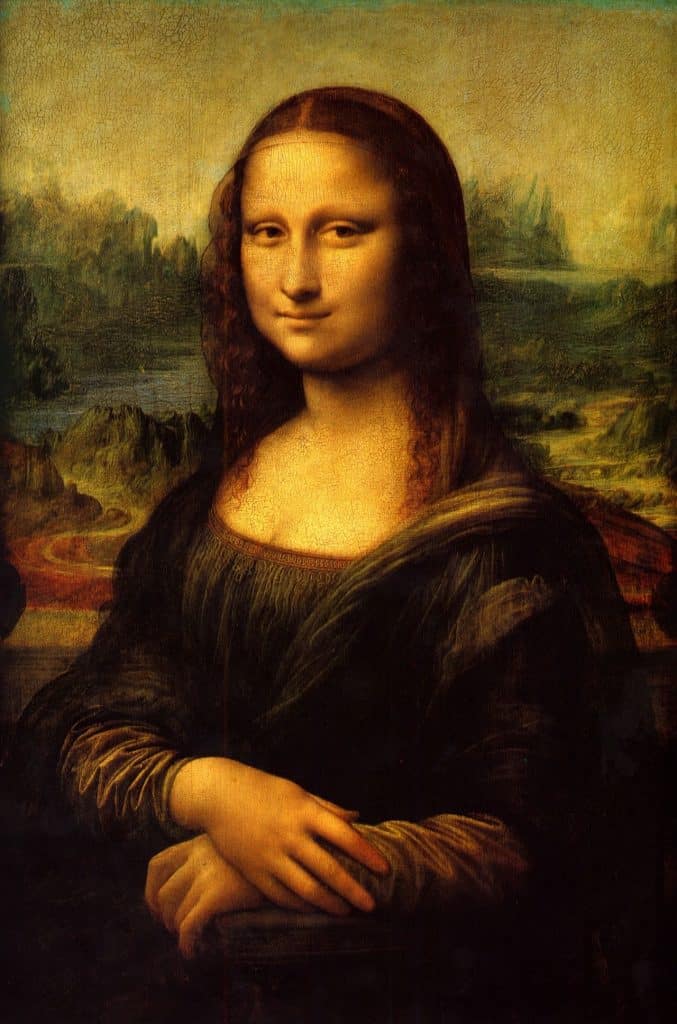
“Art is never finished, only abandoned.”
– Leonardo da Vinci
Leonardo da Vinci wasn’t just a painter—he was a professional overthinker with a hundred different side quests. He couldn’t just do one thing; he had to do everything. Painting, anatomy, engineering, physics, botany, cartography—if it existed, Leonardo wanted to reverse-engineer it and make it better. He was the human equivalent of 57 open browser tabs.
His notebooks were filled with everything from futuristic war machines (think: early tanks and flying machines) to scientific discoveries centuries ahead of their time. He sketched the first conceptual helicopter, designed an ideal city (which was never built), and figured out the basics of blood circulation long before anyone else did. Oh, and he also filled the margins with doodles, shopping lists, and a disturbing number of weird jokes and riddles.
And speaking of his paintings—good luck getting him to finish one. Da Vinci was a chronic perfectionist with attention-span issues. He spent four years on the Mona Lisa and still never handed it over to the client. Instead, he just kept tinkering with it until he died, probably whispering “just one more layer” on his deathbed. He also left over 20 paintings unfinished, because once the idea was exciting enough, the execution lost its charm.
Then there’s the fact that he was obsessed with pranks. He once convinced a patron that he could bring a dead lizard to life by attaching fake wings and horns to it. He loved messing with people and would buy caged birds just to set them free, because why wouldn’t you do that?
Leonardo da Vinci is the ultimate ENTP—a restless visionary, an intellectual thrill-seeker, and the guy who probably could have invented the airplane. If you’ve ever had a groundbreaking idea at 3 AM and abandoned it by noon the next day, congratulations. You and da Vinci would have gotten along just fine.
INFP – Vincent Van Gogh
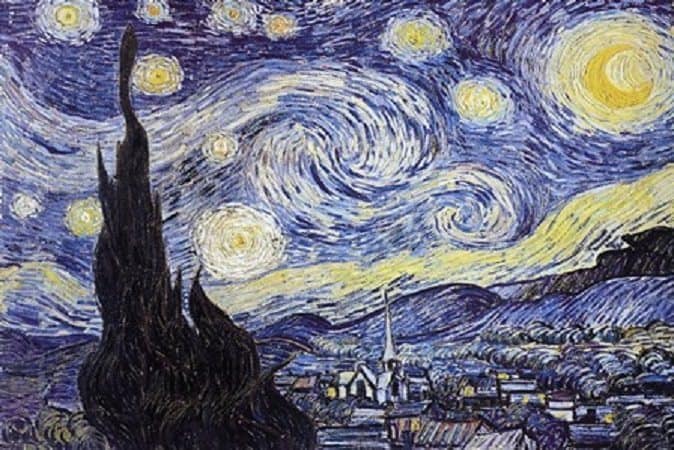
“I put my heart and soul into my work, and have lost my mind in the process.”
– Vincent Van Gogh
For Van Gogh, painting was an expression of his innermost heart and soul. He was a true idealist, who believed in showing love to the downtrodden, maintaining his authenticity, and living a life that was in accordance with his values.
His life was marked by struggle. He battled intense loneliness and mental illness, often feeling like an outsider in a world that couldn’t quite see what he saw. He wrote hundreds of letters to his brother, Theo, pouring out his hopes, doubts, and philosophical musings. He tried multiple careers—preacher, teacher, art dealer—before finding his way to painting. But even in art, success eluded him. During his lifetime, he sold one painting. Just one. And yet, he kept painting, producing over 900 pieces in a single decade, driven by a passion that didn’t depend on recognition.
Despite his struggles, van Gogh’s art is alive. His colors vibrate, his skies swirl, his fields glow with emotion. He took the pain of his existence and turned it into something timeless, something that still reaches into people’s souls over a century later. If there’s one thing INFPs understand, it’s the tension between deep feeling and a world that doesn’t always get it. Van Gogh lived in that space—and through his art, he found a way to bridge it.
INTP – J.M.W Turner
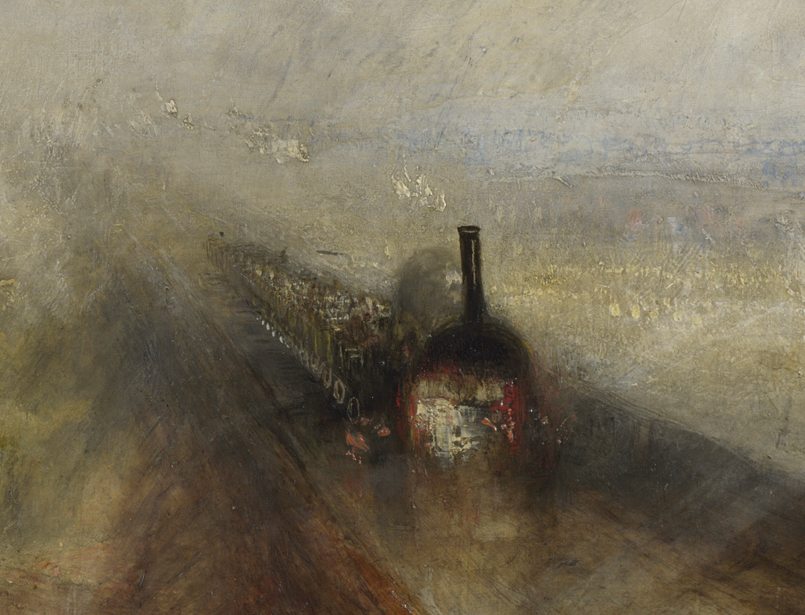
“If I could find anything blacker than black, I’d use it.”
– J.M.W. Turner
J.M.W. Turner was a shy academic who had an unconventional form of artistry. He didn’t care about tradition, rules, or making things look nice. He cared about exploration—of form, movement, and the raw, untamed forces of nature. While other artists carefully planned their compositions, Turner would sometimes arrive at exhibitions with blank canvases, only to paint them on the spot while the audience watched. He worked in bursts of chaotic genius, layering color after color until a vision emerged—a process that, to outsiders, looked completely unhinged but was actually a masterclass in intuition and experimentation.
Socially, Turner was as elusive as his misty seascapes. He was socially awkward, eccentric, and notoriously difficult to get close to. He rarely explained his work, preferring to let people figure it out themselves. His paintings weren’t about accuracy or fine details; they were about impressions—the way a storm felt, the way light danced on water, the way the world blurred when you looked at it through a haze of rain and wind. His use of color was revolutionary, often pushing into abstraction long before anyone else dared to. Critics thought he was losing his grip. In reality, he was just ahead of his time.
Like a true INTP, Turner worked on his own wavelength, completely uninterested in whether people “got” him or not. He painted because he had to—because his mind was full of shifting ideas and fragmented images that only made sense once they hit the canvas. While the world tried to categorize and analyze him, Turner remained in his own cerebral storm, chasing the ever-elusive perfect shade of black.
ENFJ – Henri Matisse
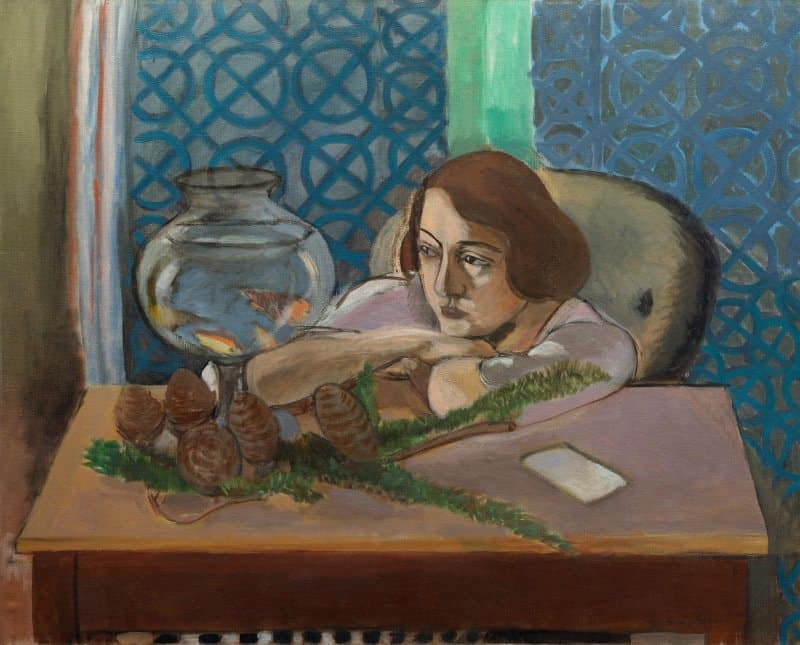
“What I dream of is an art of balance, of purity and serenity devoid of troubling or depressing subject matter – a soothing, calming influence of the mind, rather like a good armchair which provides relaxation from physical fatigue.”
– Henri Matisse
Henri Matisse didn’t just paint—he inspired. His art wasn’t as much about precision or technical perfection; it was about emotion, connection, and the energy between people. He had this rare ability to see beyond the surface, drawing out the essence of his subjects rather than just their features. Before painting someone, he would ask them to imagine themselves inside the scene, to feel the colors, the movement, the atmosphere.
His paintings radiate a feeling of warmth, harmony, and life, bursting with bold colors and flowing forms. Even when he faced personal hardships—like losing his mobility due to illness—he didn’t retreat into darkness. Instead, he adapted, turning to cut-paper collages, creating works so full of joy and energy that you’d never guess they were made by a man confined to a wheelchair. That’s Matisse in a nutshell: an eternal optimist, always focused on possibility, always bringing light even in difficulty.
Like a true ENFJ, Matisse’s vision extended beyond himself. He wanted his art to uplift, to soothe, to make people feel something good. He believed in balance, not just in composition but in life—art as a source of peace, color as a language, beauty as a kind of emotional nourishment.
ENTJ – Claude Monet
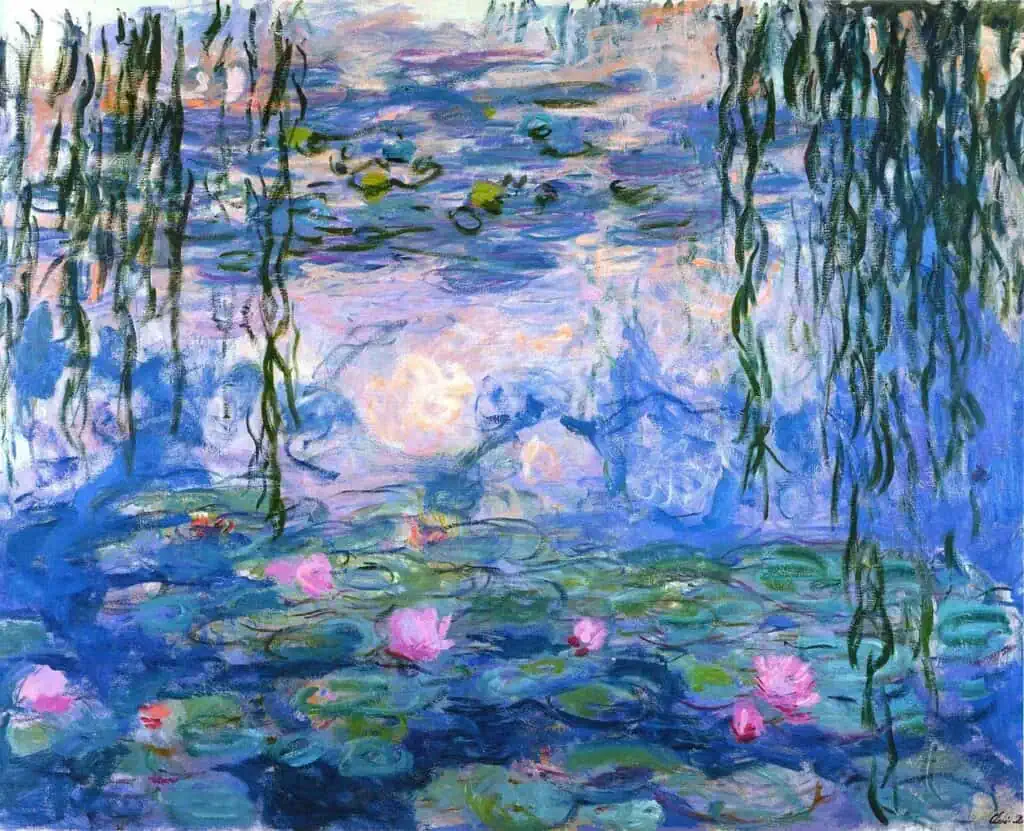
“I wear myself out and struggle with the sun. And what a sun here! It would be necessary to paint here with gold and gemstones. It is wonderful.”
– Claude Monet
Claude Monet may have painted serene water lilies, but he himself was a storm. Forget the image of a gentle, nature-loving artist—Monet was a force of will, a man who lived only for his vision, and who had zero patience for anything that got in his way. He was fiercely ambitious, relentlessly competitive, and, by all accounts, extremely difficult to be around. Even in his small town of Giverny, he was seen as intimidating, preferring the company of equally temperamental friends like Georges Clemenceau and Auguste Rodin. Monet wasn’t just dedicated to his art—he was obsessed with it, sometimes to the detriment of his relationships.
Even as a child, Monet’s rebellious streak was undeniable. Instead of paying attention in school, he spent his time doodling caricatures in his notebooks, much to his father’s frustration. (If you’ve ever gotten in trouble for drawing in class, congratulations—you and Monet have something in common.) But it wasn’t all wasted time—his artistic talent caught the eye of Eugène Boudin, who took young Monet outside to paint by the sea, introducing him to the light-filled brushstrokes that would later define his work. Monet admired him so much that he once said, “Eugène Boudin is the only man I know who caresses clouds the way you caress the shoulder of your mistress.”
Despite his temper and selfishness, Monet wasn’t a total recluse. He had a tight-knit circle of friends and was known for his legendary lunch table, where he entertained with good food and conversation. But make no mistake—Monet’s true passion, his true obsession, was painting. He worked tirelessly, pushing artistic boundaries, capturing light in ways no one had before, and ignoring every rule that tried to contain him. He was an ENTJ through and through—unyielding, strategic, and entirely devoted to his own vision of success.
INFJ – Odilon Redon
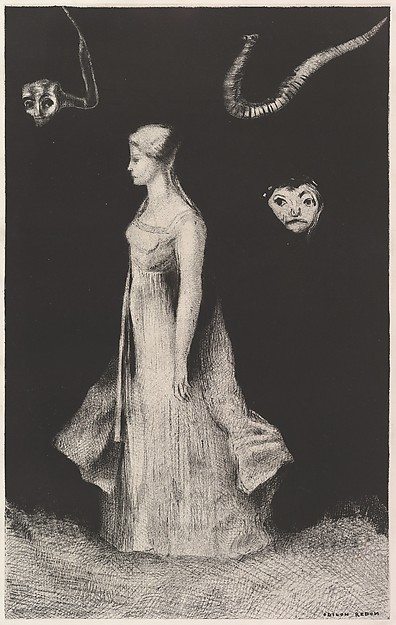
“Nothing in art is achieved by will alone. It is achieved by docilely submitting to the subconscious.”
– Odilon Redon
Odilon Redon didn’t just paint—he channeled. His art came straight from the depths of his mind, filled with shadowy dreamscapes, floating heads, and eerie, symbolic figures that seemed to whisper secrets from another realm. He wasn’t interested in simply replicating the world around him—he wanted to transcend it, to reveal something deeper, something unseen. His work was abstract, introspective, and layered with meaning that only a few will fully understand.
Like many INFJs, Redon was deeply private, a man of quiet melancholy and deep reflection. He spent much of his life in solitude, preferring the company of his thoughts to the noise of the outside world. He believed in art as a form of inner exploration, a way to access higher states of consciousness and pull something mystical into reality. His fascination with the subconscious led him to create works that feel like visions—half-formed thoughts, symbols hovering on the edge of understanding, inviting viewers to interpret them in their own way.
Though reserved, Redon was known for his kindness and depth of emotion. He understood human complexity and infused that understanding into his art, creating pieces that resonate on an almost spiritual level. Like many INFJs, he was both idealistic and melancholic, searching for meaning beyond the ordinary, seeking connection in a world that often felt isolating. His work stands as a testament to the INFJ’s ability to see beyond the surface, to capture the intangible, and to bring something profoundly otherworldly into being.
INTJ – Arnold Böcklin
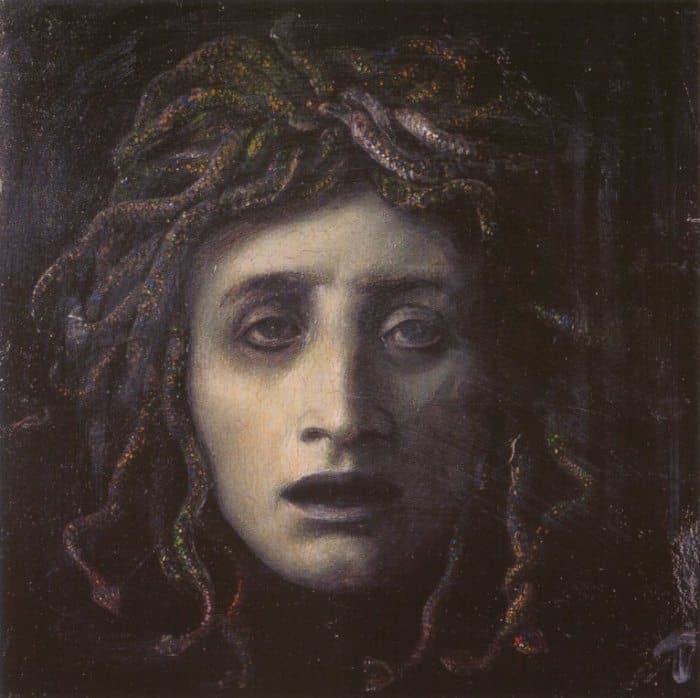
“Without untiring diligence, single-mindedness and a combative spirit, there can’t be any good result.” – Arnold Bocklin
Arnold Böcklin wasn’t just painting—he was constructing worlds. His works weren’t meant to be glanced at; they were meant to pull you in, to make you think. A master of symbolism and eerie beauty, Böcklin filled his canvases with dark mythological landscapes, ghostly figures, and visions that seemed to belong to another reality altogether. His most famous painting, Isle of the Dead, is the very definition of an INTJ’s mindscape—moody, mysterious, and full of meaning that only the most perceptive will fully grasp.
Unlike artists who painted fleeting moments or everyday life, Böcklin was obsessed with the grand and the eternal—death, mythology, and the forces that shape existence. He rejected traditional realism in favor of deep, intentional symbolism, creating each piece with a focus and precision that gave his work a brooding, almost architectural quality. His paintings feel like riddles, designed for those with the patience and intellect to unravel them. If you’ve ever felt frustrated that people don’t see all the layers of depth in your work or ideas, Böcklin would understand.
True to his INTJ nature, Böcklin was intense, private, and highly self-directed. He didn’t chase popularity or cater to trends—he painted because he had a vision, and that vision demanded to be realized. His legacy, much like that of many INTJs, is one of strategic brilliance—uncompromising, thought-provoking, and built to stand the test of time.
ESFJ – George Hughes
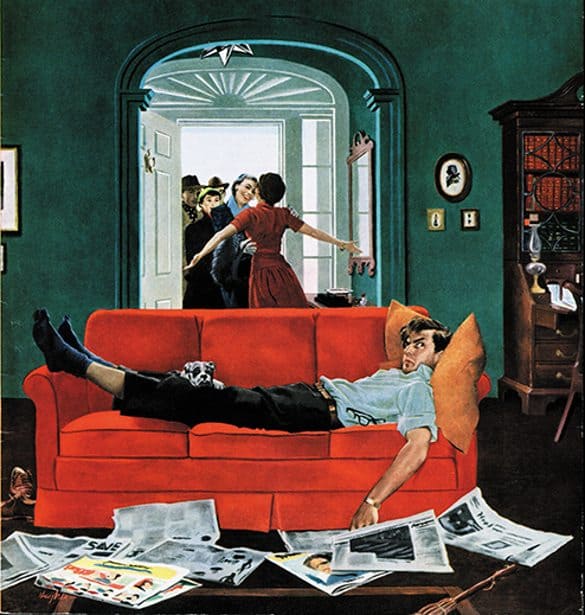
George Hughes didn’t just paint pictures—he captured moments. His artwork was a snapshot of mid-century American life, filled with bustling families, neighborhood gossip, and the quiet joys of everyday routine. He understood people—not just how they looked, but how they felt. That’s why, even as photography took over magazine covers, Hughes’ paintings still had a place. Photos showed reality; Hughes painted connection.
Born in New York City, Hughes was at the heart of twentieth-century art and advertising. He trained at the National Academy of Design and the Art Students’ League before freelancing for Vanity Fair and House and Garden. A brief stint in the automotive industry pulled him to Detroit, where he worked as a mechanical designer—until he realized he hated it. He dropped everything and moved back to New York, where he built a name for himself in commercial illustration, ultimately catching the attention of The Saturday Evening Post.
His work was all about community. When he and his wife, Casey, moved to Arlington, Vermont, they placed themselves in the middle of a growing artist hub—right alongside Norman Rockwell. (They had a running joke where Rockwell would ask for Hughes’ opinion on a sketch and then do the exact opposite.) Hughes painted 115 Post covers, alongside illustrations for McCall’s, Woman’s Day, Reader’s Digest, and more. Even as the world shifted to photography, Hughes adapted, later becoming a successful portrait artist. His work is still displayed in places like The Detroit Museum, the Pennsylvania Academy of Fine Art, and the Art Institute of Chicago.
ESTJ – Emanuel Leutze
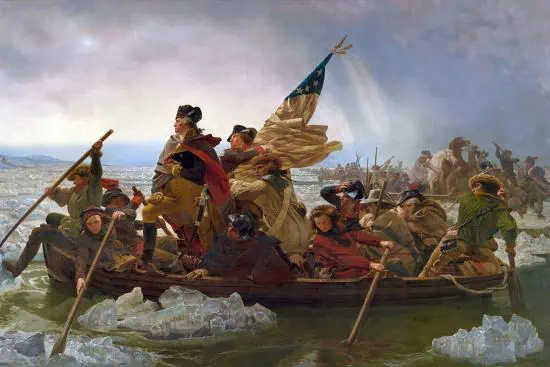
Emanuel Leutze’s most famous work, Washington Crossing the Delaware, is burned into American consciousness, but the man behind the brush was just as bold and determined as the scene he created. A German-born immigrant who saw America as a symbol of progress and strength, Leutze approached painting with careful precision but relentless drive. His work was not just about aesthetics—it was about legacy, patriotism, and making an impact.
Leutze started young. After losing his father, he began selling paintings at 14 to support himself. He was ambitious and pragmatic, entering exhibitions, securing commissions, and climbing the artistic ranks with relentless determination. His early work led him to Washington, D.C., where he planned to paint portraits of political leaders—but the financial crash of 1837 derailed his plans. Did he give up? No. He pivoted, refined his skills, and eventually found himself in Germany’s Dusseldorf Art Academy, one of the most prestigious institutions of its time. There, he painted massive, theatrical works glorifying American history, positioning himself not just as an artist but as a cultural architect shaping how the nation saw itself.
His career was marked by discipline, leadership, and a firm commitment to his ideals—quintessential ESTJ traits. Even after a studio fire destroyed his first version of Washington Crossing the Delaware, he painted another, bigger and better than before. Congress took notice, commissioning him to paint a grand mural, Westward the Course of Empire Takes Its Way, in the U.S. Capitol. His influence stretched beyond his paintings; even without holding an official teaching position, he shaped the artistic community in both Germany and the U.S., leaving behind a legacy of structure, discipline, and national pride.
ESFP – Frederic Remington
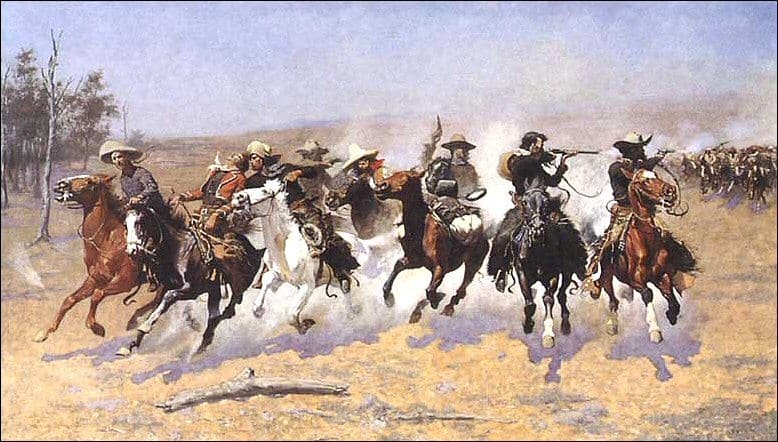
“Art is a she-devil of a mistress, and if at times in earlier days she would not even stoop to my way of thinking, I have persevered and will so continue.”
– Frederic Remington
Frederic Remington wasn’t just an artist—he was a storyteller with a paintbrush, capturing the untamed energy of the Wild West in bold, action-packed strokes. His paintings weren’t still; they moved. Horses reared, cowboys charged, dust swirled. He wasn’t content to sit in a studio and imagine the frontier—he lived it. Hunting, riding, camping—he did it all, immersing himself in the rugged world he loved to depict.
A true ESFP, Remington was all about experience, adventure, and fun. He had an easygoing charm, a sharp sense of humor, and a knack for making people laugh—whether through his lively storytelling or his hilarious caricatures of classmates. Formal education? Not really his thing. He learned by doing, sketching soldiers, cowboys, and outlaws in their element, bringing the raw energy of the frontier to life. Even his athleticism bled into his work—his passion for football and boxing fueled his dynamic, high-energy compositions.
Remington is the ultimate example of an ESFP artist—bold, adventurous, and irresistibly drawn to the thrill of the moment. His art doesn’t just show the Wild West—it throws you into it.
ESTP – John James Audubon
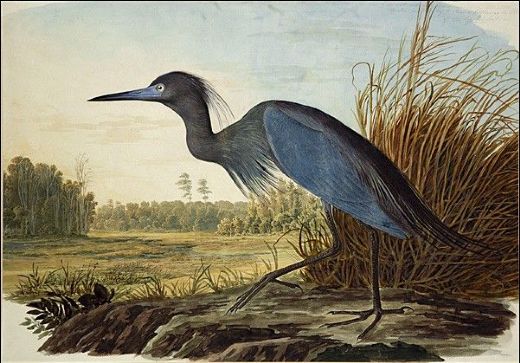
“Hunting, fishing, drawing, and music occupied my every moment. Cares I knew not, and cared naught about them.”
– John James Audubon
If there was ever an artist who lived his subject matter, it was John James Audubon. He didn’t sit in a cozy studio painting birds from secondhand accounts—he chased them through the wilderness, gun in one hand, sketchbook in the other. He wanted to see them, hold them, understand them in their natural environment. And if that meant trekking through swamps, climbing trees, or sleeping under the stars? Even better. Audubon wasn’t just an artist; he was an explorer, a hustler, and a storyteller—pure ESTP energy.
His life was a series of bold moves and reinventions. Born in what is now Haiti, sent to France as a child, and shipped off to America to dodge Napoleon’s draft, he adapted to whatever life threw at him. He ran businesses, went bankrupt, spent time in jail, and then reinvented himself as the greatest bird artist of his time. When he set out to create The Birds of America, he had no money, no guaranteed audience, and no formal scientific training—just raw talent, charisma, and the sheer nerve to make it happen. And it worked. He charmed and impressed the British elite, securing funding to publish his 435 life-sized bird portraits, which remain some of the most detailed and stunning wildlife illustrations ever made.
Audubon had zero patience for theory without action. He didn’t just paint birds—he banded them to track migration patterns, an experiment that was groundbreaking for its time. He traveled constantly, sold his art with the confidence of a seasoned salesman, and told wildly exaggerated stories about his adventures, leaning into his own legend. He was a survivor, a risk-taker, and, for better or worse, a man who did whatever it took to succeed. Like many ESTPs, he was brilliant, adaptable, and more than a little reckless—a man whose legacy is as complicated and dynamic as the life he led.
ISFP – Winslow Homer

“The life that I have chosen gives me my full hours of enjoyment for the balance of my life: the sun will not rise, or set, without my notice and thanks.”
– Winslow Homer
Winslow Homer wasn’t a man of words—he let his paintings do the talking. You can almost hear the crash of the waves, feel the cold spray of salt water, sense the silent anticipation of the women standing on the shore, waiting for their husbands to return. Homer didn’t deal in grand historical moments—he focused on the real, the raw, and the unspoken. He painted life as it was, stripped of artifice, revealing both its quiet beauty and its brutal indifference.
Unlike many artists of his time, Homer wasn’t drawn to crowded salons or intellectual debates—he wanted solitude. He spent years painting the sea, the wilderness, and the people who lived at the mercy of both. His best works weren’t about politics or social commentary—they were about emotion and experience. Whether it was the quiet struggles of women on the shore, the fierce battle of men against the ocean, or the fleeting joy of children at play, Homer painted with an instinctive, sensory-driven awareness. He wasn’t interested in big, theoretical narratives—he was interested in moments.
His later life was spent in near-total isolation in Prouts Neck, Maine, where he painted some of his most intense and atmospheric seascapes. By then, he had abandoned any need to explain himself. His work became more abstract, more elemental—just water, light, and movement, raw and untamed. Homer was an ISFP through and through—deeply attuned to the world around him, guided by feeling over theory, and committed to creating art that wasn’t just seen, but felt.
ISTP – Georgia O’Keeffe
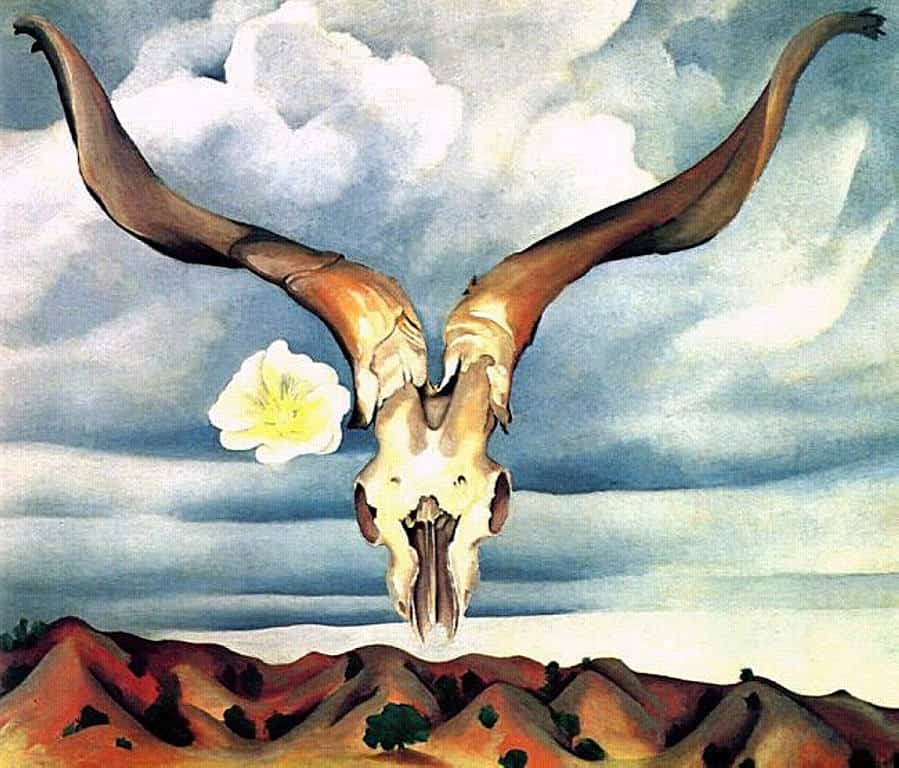
“I don’t very much enjoy looking at paintings in general. I know too much about them. I take them apart.”
– Georgia O’Keeffe
Georgia O’Keeffe wasn’t interested in what people thought about her art—she was interested in how to make it. She wasn’t creating big emotions; she was precise, unsentimental, and completely hands-on. Her paintings—whether of flowers, bones, or skyscrapers—weren’t just about what she saw but about how she could capture form, color, and composition in the boldest way possible. People wanted her to be poetic about her flower paintings, but O’Keeffe famously shut that down, saying, “I hate flowers—I paint them because they’re cheaper than models and they don’t move.”
Her artistic process was hers, and she didn’t need anyone else’s validation. From a young age, O’Keeffe was independent and determined to carve her own path. She studied traditional techniques at the Art Institute of Chicago but quickly became more interested in experimenting than in following convention. When Alfred Stieglitz, a well-known photographer and art dealer, saw her work, he was so captivated that he put it in a gallery without even asking her first. She wasn’t thrilled about that, but it launched her career, and she took full control of it from there.
O’Keeffe’s life was one of self-sufficiency and quiet defiance. She craved solitude, moving to New Mexico to live and work on her own terms, far away from the New York art scene. She found inspiration in the vast landscapes, bones, and skies, reducing everything to its rawest, most essential form. Even as her eyesight failed in her later years, she refused to stop creating, finding new ways to work with assistants and adapt to her changing abilities.
ISFJ – Norman Rockwell

“I talk as I sketch, too, in order to keep their minds off what I’m doing so I’ll get the most natural expression I can from them. Also, the talking helps to size up the subject’s personality, so I can figure out better how to portray him.”
– Norman Rockwell
Norman Rockwell preserved small-town America, one careful brushstroke at a time. His work was about the moments that made life feel warm, familiar, and human. The subtle way a father helped his son tie a tie, the nervous excitement of a boy getting his first haircut, the quiet resilience in the eyes of an elderly woman saying grace—Rockwell saw these things when others overlooked them. He was an observer, a storyteller, and a perfectionist, capturing not just how people looked, but how they felt.
Rockwell’s success wasn’t the result of bold rebellion or avant-garde experimentation—it was the product of discipline, consistency, and a firm commitment to his craft. By 16, he was already working as an illustrator. At 22, he painted his first Saturday Evening Post cover. Over the next 47 years, he would paint 321 more, each one carefully composed to reflect the values, warmth, and quiet humor of everyday life. He spent hours perfecting expressions, adjusting body language, and reworking details until everything felt real. His art wasn’t about exaggeration—it was about truth, about capturing what made people people. The beauty of the moments he captured really speak to the ISFJ’s way of finding meaning and significance in the small details that others overlook.
True to his ISFJ nature, Rockwell preferred to stay behind the scenes, expressing his values through his work rather than grand gestures. Though he was known for lighthearted, nostalgic imagery, he also took on socially significant themes later in life, painting civil rights struggles, poverty, and space exploration. Even as the art world shifted toward abstraction and modernism, Rockwell remained true to himself, proving that sometimes, the most powerful art isn’t the loudest—it’s the kind that makes people feel at home.
ISTJ – Edward Hopper
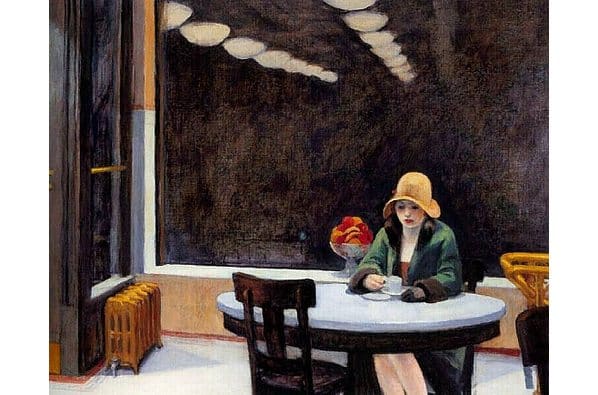
“My aim in painting has always been the most exact transcription possible of my most intimate impression of nature.”
– Edward Hopper
Edward Hopper didn’t paint noise, chaos, or grand displays—he painted silence. His art wasn’t about movement, but about stillness, about the moments in life when nothing is happening—and yet, something is. His paintings captured loneliness, isolation, and quiet observation, often showing solitary figures lost in thought, distant from each other even when sitting side by side.
Unlike many of his contemporaries, Hopper had zero interest in trends or self-promotion. He worked slowly and methodically, perfecting every detail before moving forward. His compositions were structured, precise, and carefully planned, capturing an almost photographic realism while still maintaining a sense of detachment. When commissioned for a Napoleonic war poster, he painted the soldiers in historically accurate French uniforms—only to be told to change them to something more appealing to an American audience. He refused. Authenticity mattered more than popularity. This is true ISTJ form. They hate anything that is phony, manipulative, or cloying.
Though he lost critical favor as Abstract Expressionism took over in the mid-20th century, Hopper didn’t care. He kept painting the same themes, the same stark cityscapes, the same quiet tension between people and progress. His most famous work, Nighthawks, is about existing in a space and feeling the weight of it. He had no interest in psychoanalyzing his own work or chasing artistic movements. His style remained uncompromising, steady, and deliberate, just like the man himself.
What Do You Think?
Do you have a favorite artist on this list? Do you have a favorite artist that you’d like to add? Let me know in the comments?!
Find out more about your personality type in our eBooks, Discovering You: Unlocking the Power of Personality Type, The INFJ – Understanding the Mystic, The INTJ – Understanding the Strategist, and The INFP – Understanding the Dreamer. You can also connect with me via Facebook, Instagram, or YouTube!

This article contains affiliate links. I only recommend products I truly believe in.
Other Articles You Might Enjoy:
The Evil Versions of Every Myers-Briggs® Personality Type
How You Handle Criticism, Based On Your Myers-Briggs® Personality Type
Here’s the Book You Should Read, Based on Your Myers-Briggs® Personality Type
Here’s the Bridgerton Character You’d Be, Based On Your Myers-Briggs® Personality Type
Here’s How Open You Are with Your Feelings, Based On Your Myers-Briggs® Personality Type
Where Your Confidence Lies, Based On Your Myers-Briggs® Personality Type
Sources:
Creative You: Using Your Personality Type to Thrive
Lives of the Artists: Masterpieces, Messes (and what the neighbors thought!)
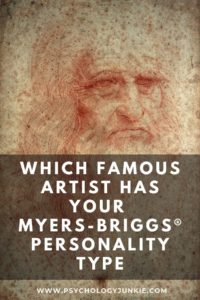


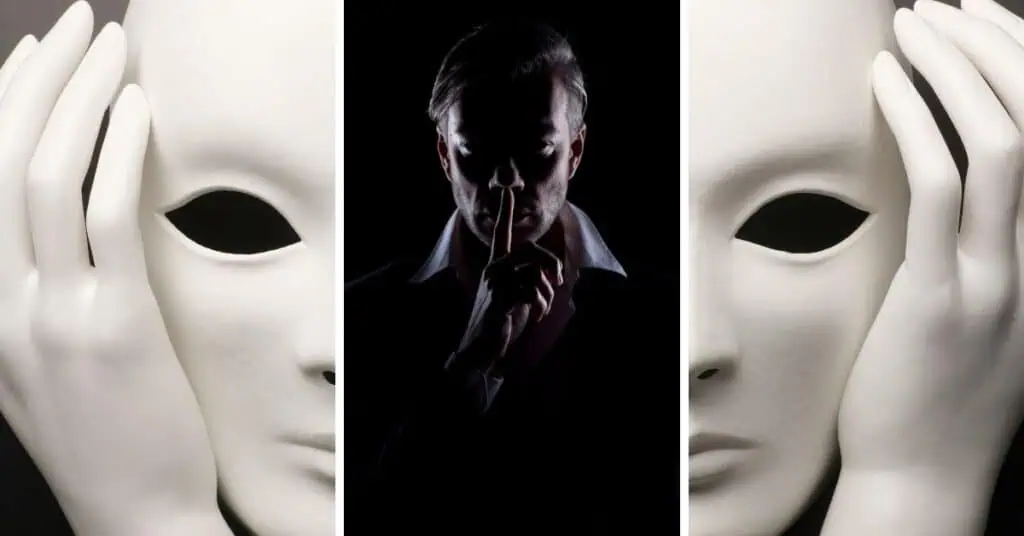
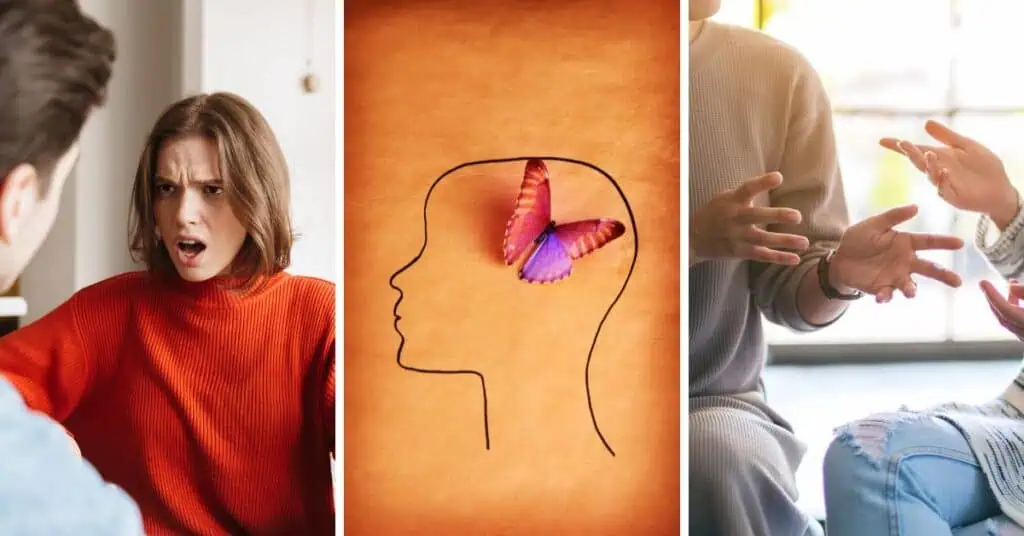

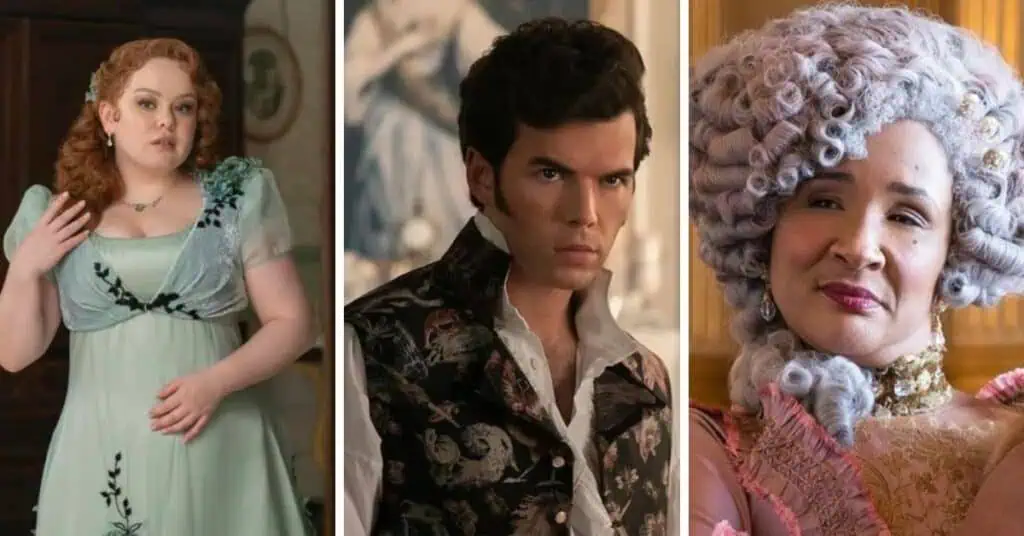





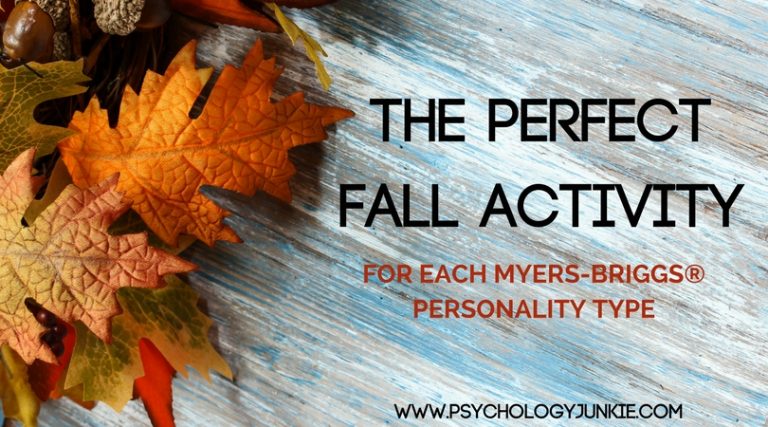


I love this! You can really see how type influences their styles. I’m an INTJ but I think J.M.W Turner’s work is my favorite.
I love this too! Very interesting to see the difference between the S-type and N-type works, and further, the difference between what an F-type and a T-type produces within being S or N. I really had never seen it so clearly before.
I am an INFP, and i’ve been a fan of Van Gogh since a long time!
Ohh, so nice to hear an INFP perspective! I love his work as well (I’m an INFJ)…it is very inspiring and dream-like to me 🙂
I’m really curious about Andrew Wyeth… Great post!
The picture attributed to Salvador Dali is actually by a Russian artist named Vladimir Kuch. I know, because I own it.
Ohhhh, thank you for letting me know! I was sure that was Salvador Dali, guess I blundered that one!
I’m an INTP professional artist, I can tell you more than half of your list is wrong af. The appearance and expectation is far from what they are my child. More study plz.
“I’m a kid! I don’t like being told what to do, and music is the only place I know where I can roam free and do what I want. It is my fortress of solitude and only I have the key.”
“The reason it takes so long to produce an album like this is because out of 10 pieces I write, only one or two will make the cut, and then the process to embellish it with live orchestra, singers and instrumentalists begins, which can last for months. It’s all about finding the right voice for the right music, the right instrument for the right melody, the right length, sound color, orchestration, lyrics etc. It takes a long time, and the process is very different from writing film music where you typically just follow something on-screen, or in a band where you have your guitars, bass, drums, vocals and maybe a synth. The complexity of the soundscape means more things can go wrong, clash, or otherwise make the process difficult. You are sometimes dealing with polar opposites, but just because we’ve been told that certain things don’t go well together I don’t see that as a reason to avoid it, but a challenge rather. The satisfaction for me ultimately lies in untangling the mess and making all the individual chaotic parts come together in harmony somehow. That’s when I feel like I’ve done a good job.”
Thomas Bergersen (ISFP)
Thanks for this information!! I’m going to look up Thomas Bergersen now! IXFPs are some of the most moving artists out there I think.
He is impressive… I only know the MBTI since a few weeks … But for his taste of challenge, the nature of his music (he is the inventor of epic music), and his physical athletic I thought “Adventurer”.
Cassandra, Merchant Prince, Moving Mountain, Invisible, Immortal, Moving Mountain etc…
And sensitive of course.
ISFP, INTJ, INTP and ESFP are the best imo.
ISTP is a shame. ESTJ is pathetic, ESFJ is nice
OMG! I am an ENTJ and while i was clicking i think for me: “Oh! i really love Manet which artist would be?”
it is not the first time something like that happens to me. May it be tha Ni?
Can you do the same for music? I would be once again very impressed.
I’m not sure about Leonardo da Vinci as an ENTP though..
I thought he was either a ISTP, INTP or INTJ..
But it is hard to guess the types of people who have died for centuries of years..
Odilon Redon feels PERFECT for INFJ. I love ALL the artists listed here (yes, even Norman Rockwell!), they all contributed such texture and beauty to the world of art (as distinct from the “Art World”, which is not always a beautiful place). And it does not at all surprise me that Georgia O’Keeffe was ISTP, since she was famously brusque and curmudgeonly in person, rejecting efforts to sentimentalize of her work. And even though her most famous paintings are of flowers, there is something fascinatingly clinical about her interpretations of them. I find it fitting that her work seems to crop up a lot in the waiting rooms at doctors’ offices.
I am both a INFJ and an artist. I feel that I need to point out that fine artists and illustrators are not in the same category, and cannot be lumped together like you did here. I’m very happy that Mattise was probably an INFJ, but strangely I have also been drawn to the works of Van Gogh, Cezanne, and Monet. There’s contradictions of attitude and approach among these artists, but as an INFJ I embrace them all. Still, there’s no place for illustrators on such a list like this. Would you put Jacqueline Susanne, Harald Robbins and the like on the same list with the great writers? You may, but you shouldn’t.
why are infps always the least empowered, most tragic individuals? sigh dammit
Picasso – ENTP, for sure, how could you skip that one 🙂
i doubt any of them were S types, besides ISTP and ISFP.. 😛
Hockney? definitely some melodramatic, ENTP probably again?
Van Gogh was likely INFP, although mentally ill so hard to type, could be INT as well.
Frida Kahlo ENFP
Mattise struck me as a shy guy, gentle but low key. INFJ.
Nice! Wouldnt think INTJ would be artist…maybe our 4th function- NiSE
Frida Kahlo is also ISFP
Dali was not an ENFP. That was his personal. He spent a LOT of time to himself when he wasn’t creating something and sharing it with the world. His human design has this genius freak channel of someone who needs to express ideas but he also needed a lot of alone time and was mostly just with his wife. Sure he networked because artists and creators have to, but he was absolutely an INFP. And I’ve seen enneagram 4w3. If you look at his incessant study of the psyche, mind, psychoanalysis, and human behavior you’d see he’s either 5w4 or 4w5. So sick of these mass profiles that are made by people who don’t know the individuals profiles at all.
Wow Susan ,I have one of Winslow Homers paintings .It’s a copy but it’s his painting .When I read what you wrote about him being ,like me,an ISFP. I need my blessed solitude .I am very much like him .Thank you so much for all you do for us .There is no one quite like you !
Fascinating to learn about the personalities behind the artworks. Never would have guessed mona lisa was painted by an entp.
My favorite artist is josephine wall. Colorful, beautiful, surreal images, but also realistic in detail. To me, those qualities make the best art.
Very interesting article! As an INTP, and an artist, I hadn’t heard of J.M.W Turner before.
On a side not though, are you an INFJ or INTJ? I’ve seen you say both 😅
I’m an ISFP and have always been drawn to the works of Maxfield Parrish and Van Gogh, but I’ll certainly look into Homer.